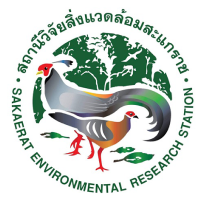Keywords :
Holocene; Plant Silica; Vegetation Changes; Thailand; Tropical Seasonal Forest
บทคัดย่อ :
Tropical seasonal forest widely distributed in Thailand and neighboring countries has been exposed to human impact since the early settlers started to use the forest. Vegetation changes in the region are important in considering the influence by global warming and human activities. In this study, we applied on-site analysis of plant silica to seasonally dry forests to estimate past vegetation. We selected three sites in different forests in Sakaerat, northeast Thailand: deciduous dipterocarp forest (DDF) and dry evergreen forest (DEF). In each site, soil samples were collected from every 10 cm up to 1m deep. Charcoal pieces in the soil layers were also collected for radio carbon dating. Many Dipterocarpaceae species characteristic to dry forests such as Hopea ferrea, Shorea roxburghii, and S. siamensis produced silica in their leaves. Arundinaria pusilla, a typical bamboo species to DDF, also produced distinguishable silica. From one pit in DDF (SD3), carbon dating of charcoal pieces collected from 57 cm and 27 cm deep indicated 490(+-) 21 and 972(+-) 21 year BP, respectively. In SD3, silica derived from current vegetation was found from the layers up to 40 cm from the surface. On the other hand in DEF, charcoal collected from 84 cm and 41 cm deep indicated 8732(+-)34 and 937 (+-)22 year BP, respectively. Silica derived from DEF was found up to 70 cm deep except the surface layer. From the results, we concluded that 1) current DDF already existed about 1000 years ago, and 2) some of DEF were replaced.
เอกสารอ้างอิง :
Eguchi, S. I., Okada, N., & Siripatanadilok, S. (2014). Plant silica fossils in the soil from Sakaerat Environmental Research Station, northeast Thailand. Research Minutes of the Institute of Natural Sciences, Faculty of Arts and Sciences, Nihon University. Earth Science= Proceedings of the Institute of Natural Sciences Nihon University, (49), 29-33.



